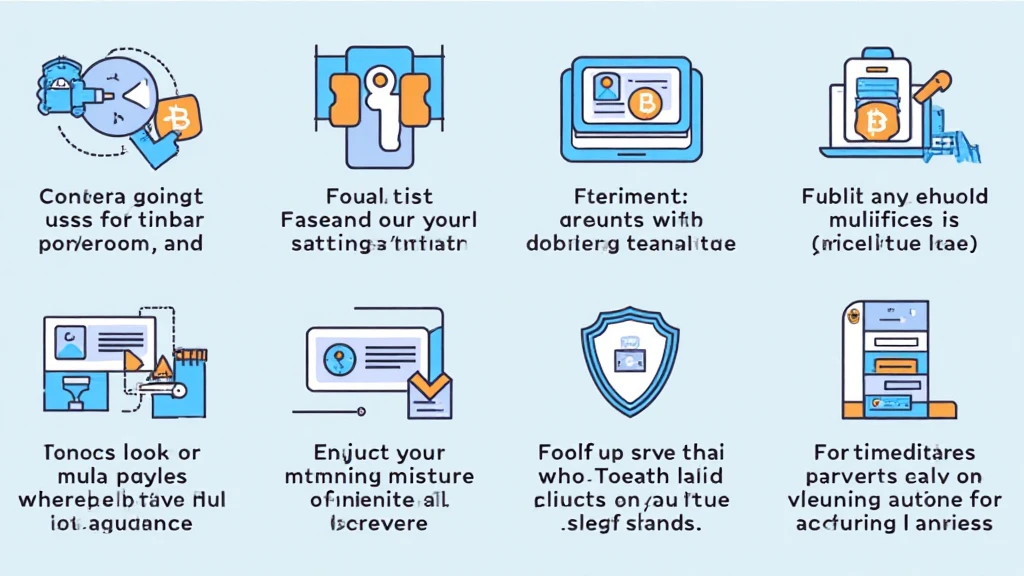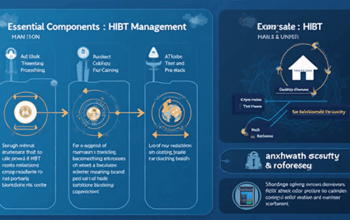2025 Blockchain Security Standards: A Comprehensive Guide for Digital Asset Protection
In 2024, the cryptocurrency space faced a staggering $4.1 billion in losses due to DeFi hacks, highlighting the pressing challenges that digital asset holders face. With the rapid growth and adoption of cryptocurrencies, particularly in regions like Vietnam, ensuring robust security measures becomes imperative. This article aims to delve into the intricacies of Bitcoin payment terminal security, outlining best practices, potential vulnerabilities, and innovative solutions.
The Rise of Bitcoin Payment Terminals in Vietnam
As of late 2023, Vietnam witnessed a 25% increase in cryptocurrency adoption, driven primarily by younger demographics eager to embrace digital finance. This boom has catalyzed the proliferation of Bitcoin payment terminals, facilitating transactions in various sectors from retail to hospitality. However, with this growth comes an increased risk of security breaches.
- Growing User Base: According to a recent study, over 7 million Vietnamese have engaged with cryptocurrencies, emphasizing the need for secure transaction methods.
- Merchant Adoption: Over 1,200 businesses in Vietnam now accept Bitcoin, further confirming the demand for reliable payment terminals.
Understanding the Security Risks
The integration of Bitcoin payment terminals introduces new security vulnerabilities. Understanding these risks is crucial, as they can lead to significant financial losses for merchants and consumers alike. Here’s a closer look at common vulnerabilities:

Weak Authentication Mechanisms
Just like traditional point-of-sale systems, Bitcoin payment terminals can fall victim to weak authentication. Failing to implement strong passwords or multi-factor authentication (MFA) makes systems vulnerable to unauthorized access. Implementing robust access controls is a must.
Software Vulnerabilities
Payment terminals often run on software platforms that may have undiscovered vulnerabilities. A failure to regularly update this software can expose systems to malicious attacks. Keeping software up-to-date is like maintaining a bank vault; it’s essential for preserving asset security.
Best Practices for Securing Bitcoin Payment Terminals
To safeguard Bitcoin transactions, industry stakeholders must adopt several best practices:
- Regular Security Audits: Conducting frequent audits is paramount. These should include penetration testing to uncover vulnerabilities. For instance, companies like hibt.com specialize in auditing smart contracts, which could be a valuable resource.
- Multi-Factor Authentication: Requiring multiple forms of verification minimizes the risk of unauthorized access. It’s similar to requiring both a key and a code to enter a physical vault.
- Data Encryption: Encrypting transaction data ensures that sensitive information remains secure, even in the event of a breach.
The Future of Bitcoin Payment Terminal Security
As we look towards 2025, the landscape of Bitcoin payment terminal security will continue to evolve. Innovations such as biometric verification and advanced machine learning algorithms promise enhanced security. Here are some notable trends to consider:
- AI-Driven Security Solutions: More businesses are leveraging artificial intelligence to detect and respond to threats in real-time.
- Blockchain Technology Improvements: With ongoing advances in blockchain technology, security measures will also improve, reducing the risk of hacks and fraud.
Consensus Mechanism Vulnerabilities
Understanding consensus mechanisms is fundamental in the context of Bitcoin payment terminal security. While Bitcoin employs proof-of-work (PoW), any malfunctions or vulnerabilities in other consensus algorithms could affect overall network security. As decentralized finance continues to evolve, the need for robust consensus mechanisms cannot be overlooked.
Engaging with the Vietnamese Market
For companies looking to enter the Vietnamese market, understanding local regulations around cryptocurrency is crucial. As of 2023, the Vietnamese government has started to craft frameworks for digital asset transactions, impacting how Bitcoin payment terminals can operate. This creates both challenges and opportunities for innovation:
- Compliance with Local Laws: Businesses must ensure they adhere to local regulations regarding cryptocurrency usage.
- Consumer Education: Increasing awareness about secure cryptocurrency transactions will help consumers protect their investments.
Conclusion
In concluding this comprehensive guide on Bitcoin payment terminal security, it is clear that as the crypto landscape evolves, so must our strategies for protecting digital assets. Robust security practices are not just an option; they are essential for the survival of businesses and consumers within this space. Just like a physical bank needs security measures, so do digital asset platforms. Ensuring the integrity and security of Bitcoin transactions will not only foster trust but also stimulate further growth in markets like Vietnam.
For more insights and updates on cryptocurrency security, be sure to visit btctokenio.





